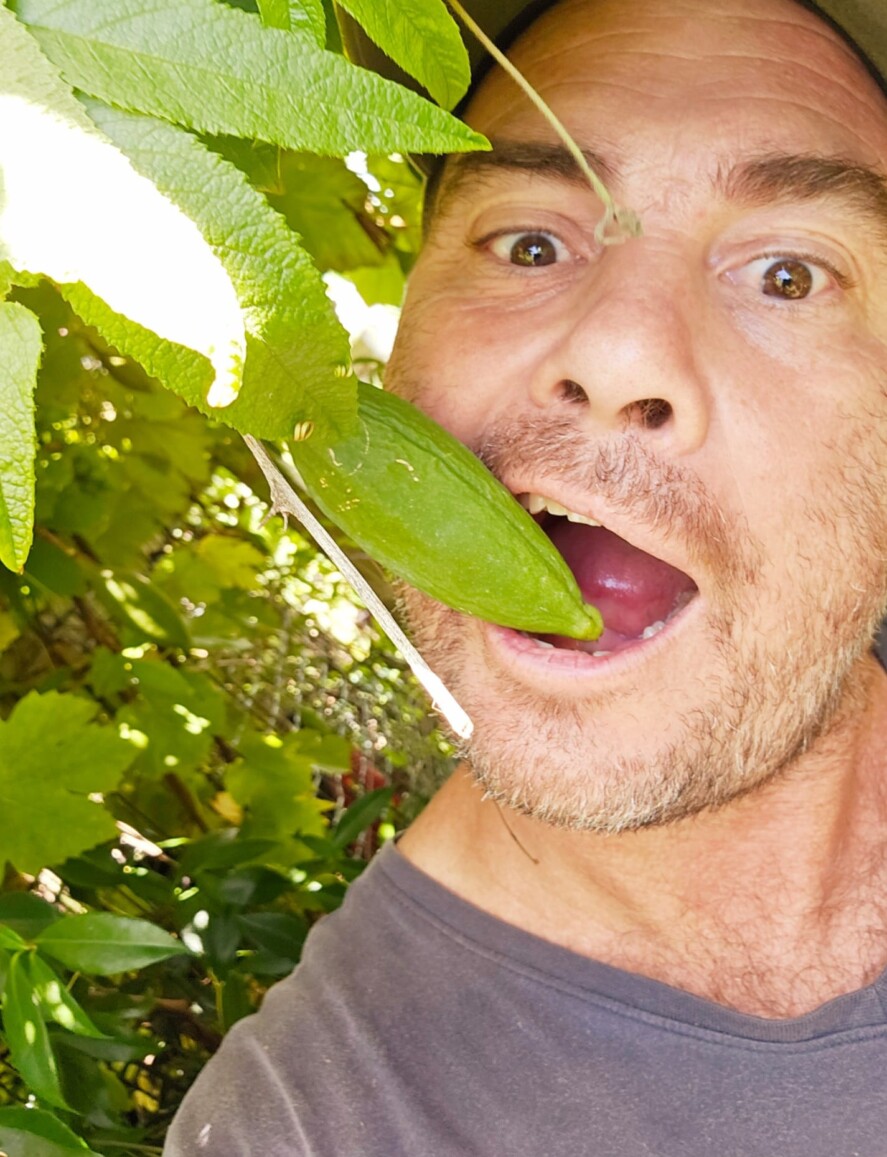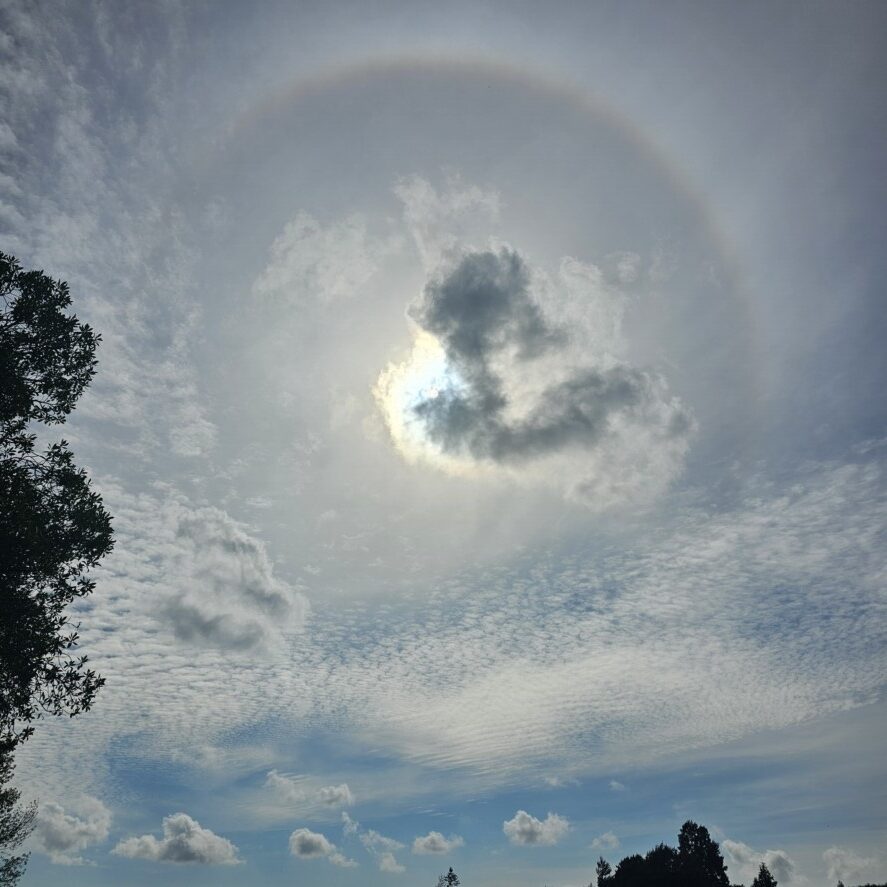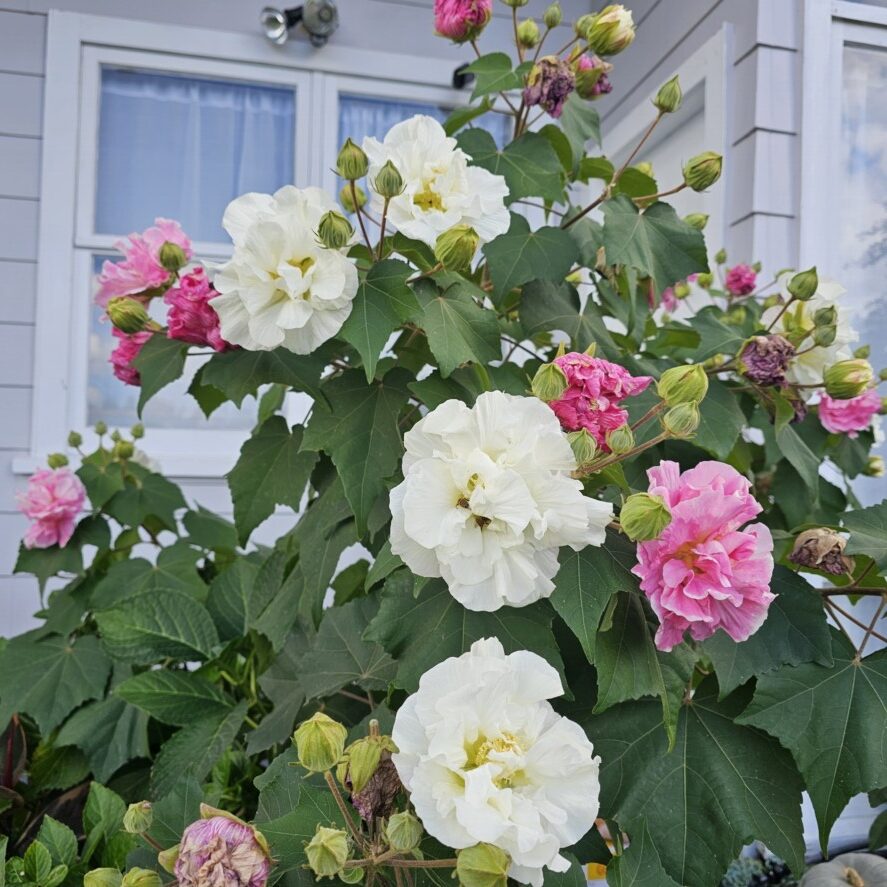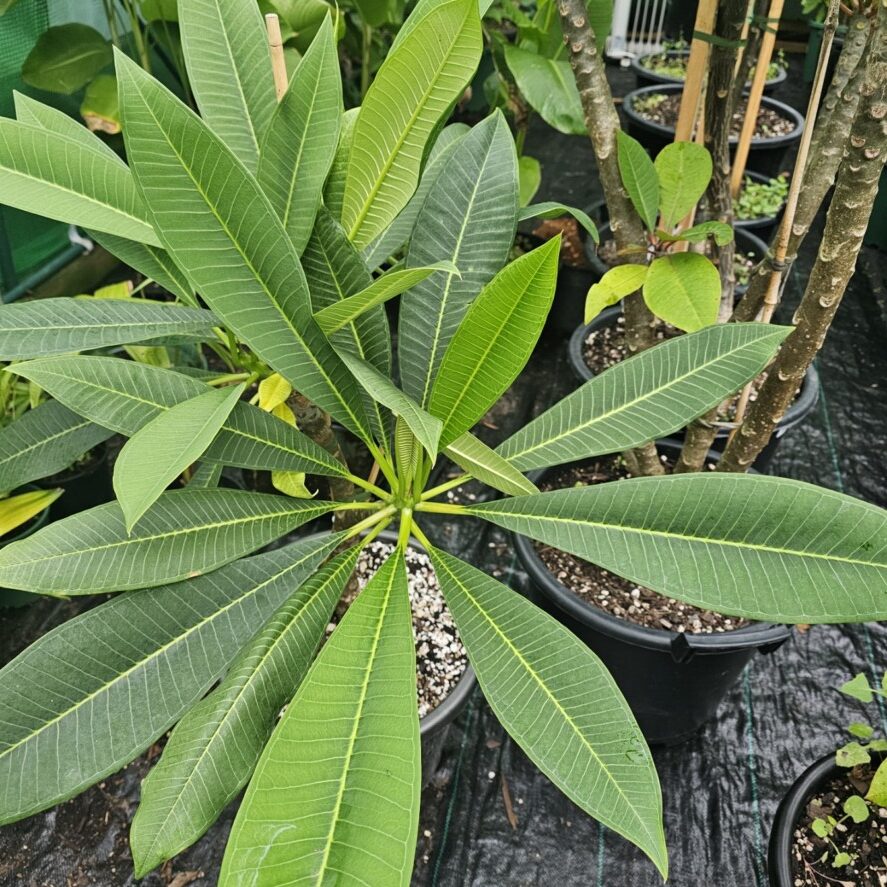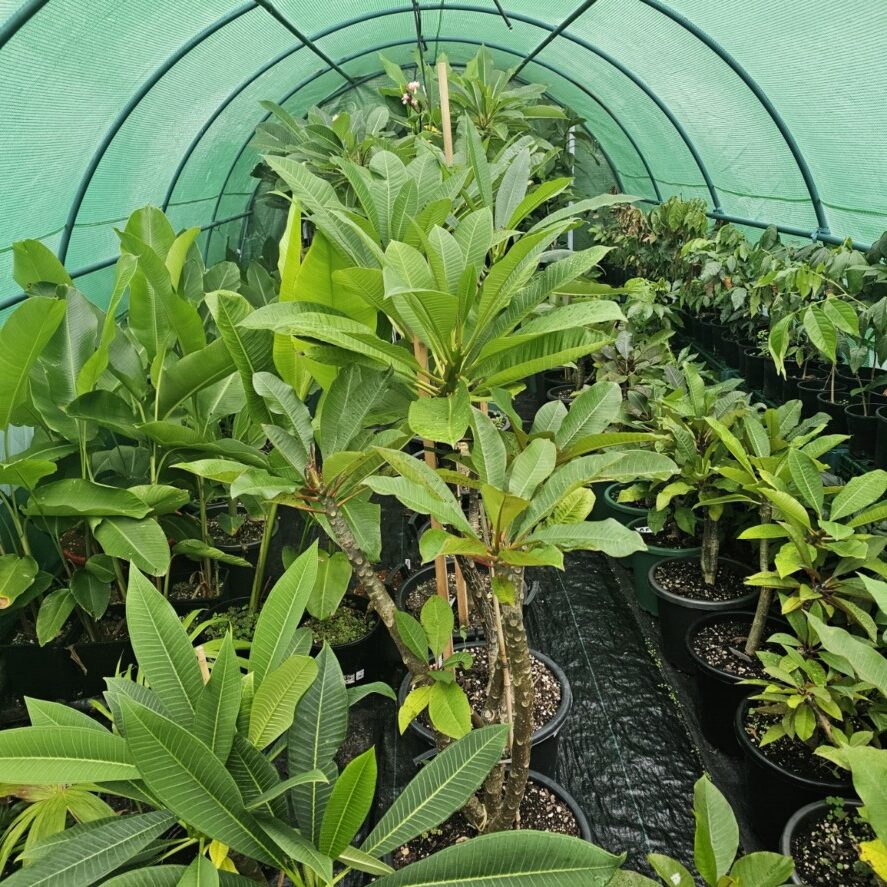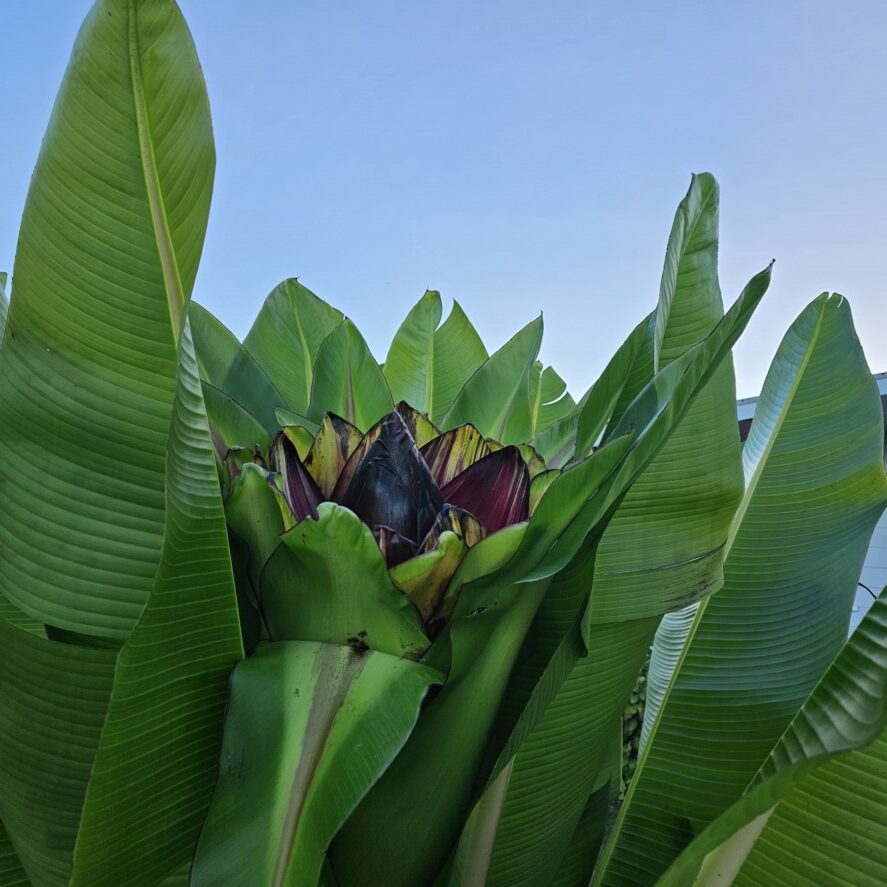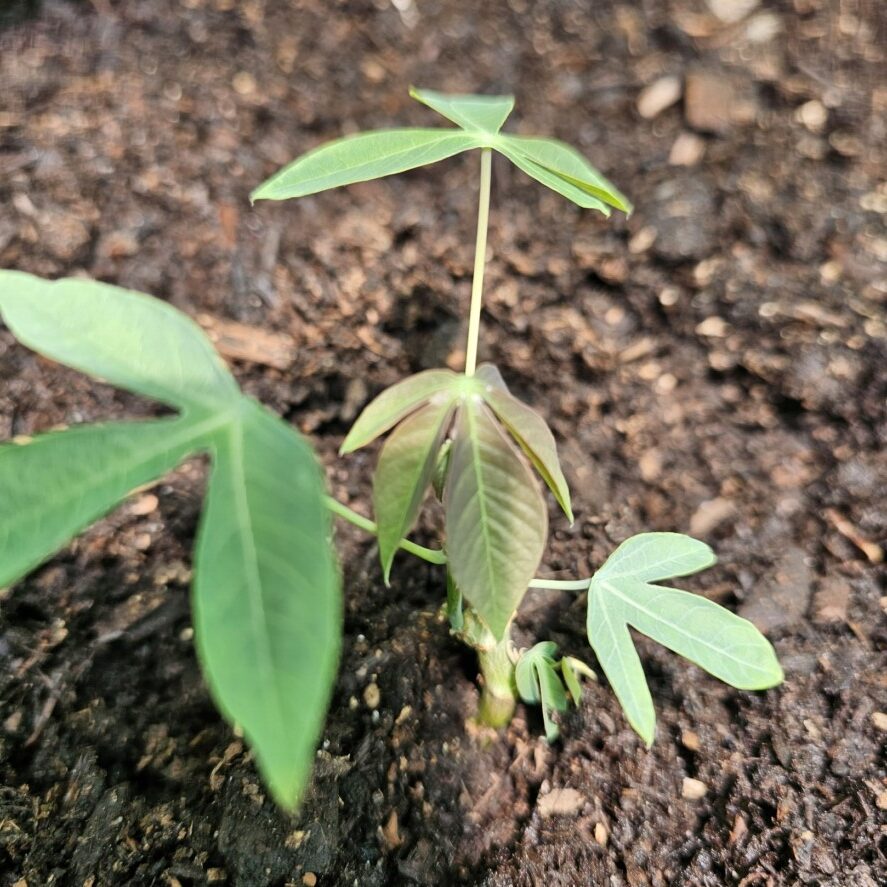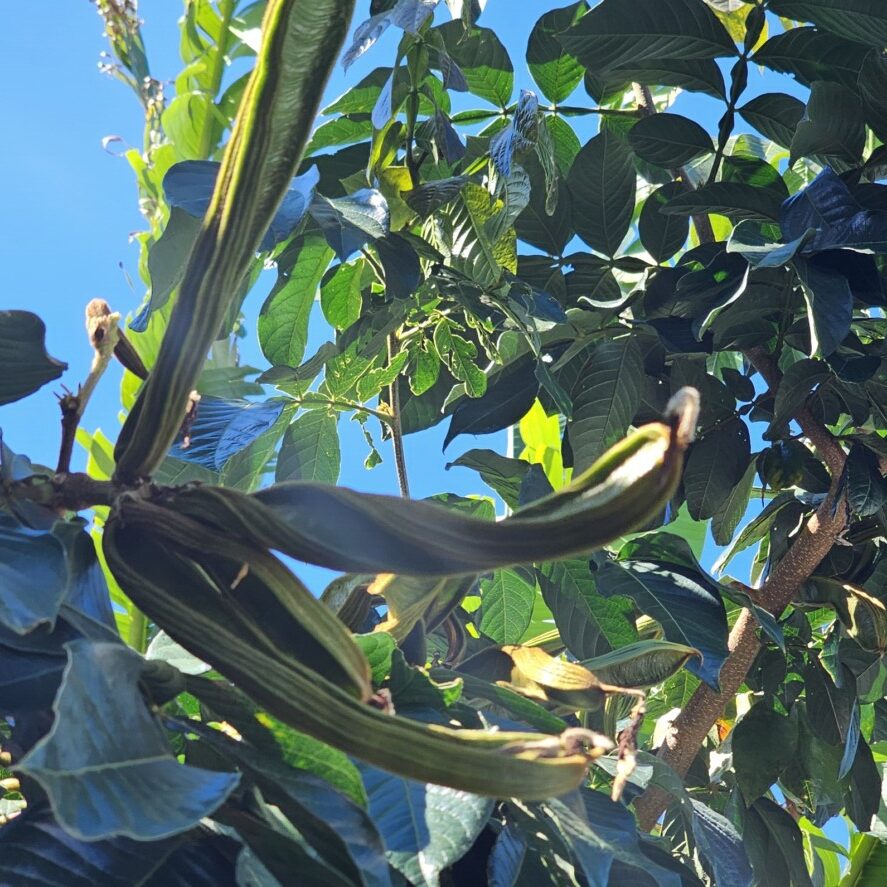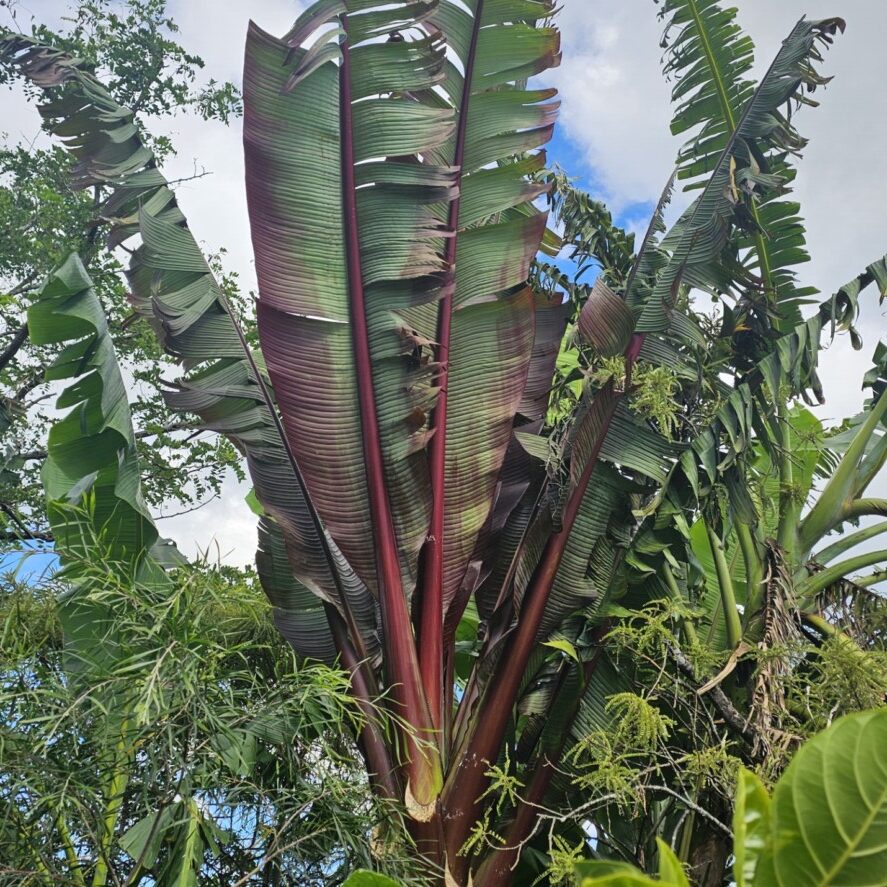-
Troppo Plant & Garden Articles
- Te Puke Region
- TROPPO’s Food Forest in Te Puke, BOP (www,foodforest.org.nz)
- Troppo’s Plant Collection
- TROPPO's Nursery Directory
- Food Forests of New Zealand (www.foodforests.nz)
- Nursery Map - Plant Suppliers of NZ Directory (www.nurserymap.nz)
- Kids Garden Corner
- New Zealand Garden Bird Survey
- New Zealand Garden Groups
- Delicious Recipes
Banana ‘Musa Acuminata var. Zebrina’ – The Striking Blood Banana
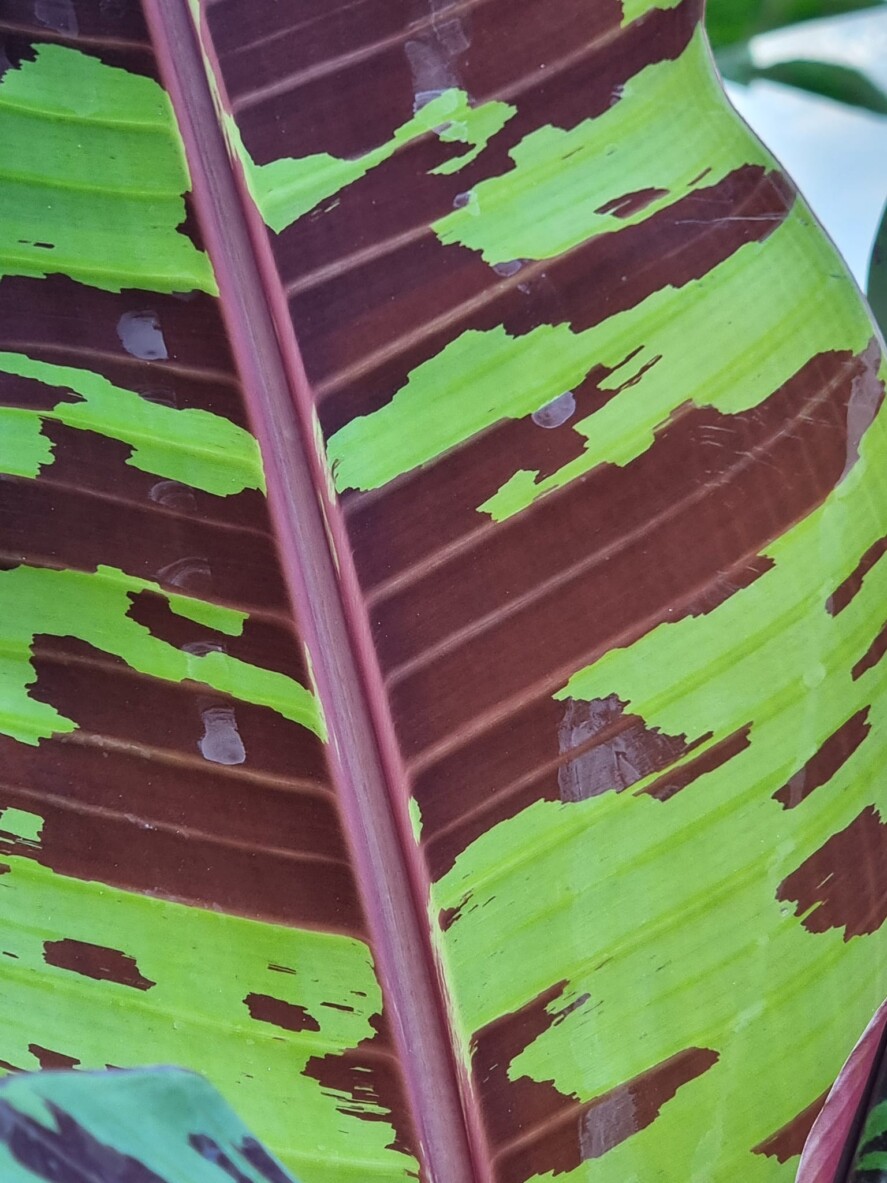
Grown in Te Puke, Bay of Plenty, NZ, the Banana Musa Acuminata var. Zebrina, popularly known as the Striking Blood Banana, has captivated plant enthusiasts with its vibrant foliage and unique appearance. Its striking red and green speckled leaves add a dramatic flair to any garden or indoor space, making it a stunning conversation piece. As you explore the care and characteristics of this remarkable plant, you will discover tips for nurturing it and maximizing its beauty in your own botanical collection.
Botanical Classification and Origins
For enthusiasts of exotic plants, the Banana ‘Musa Acuminata var. Zebrina’ captures the imagination with its vibrant foliage and striking blood-red patches. This unique variety of the common banana plant originates from Southeast Asia, where its tropical climate nurtures its growth. As you explore into its botanical classification, you’ll discover its place within the broader family of Musaceae, which includes numerous banana cultivars valued for both their ornamental beauty and edible fruit.
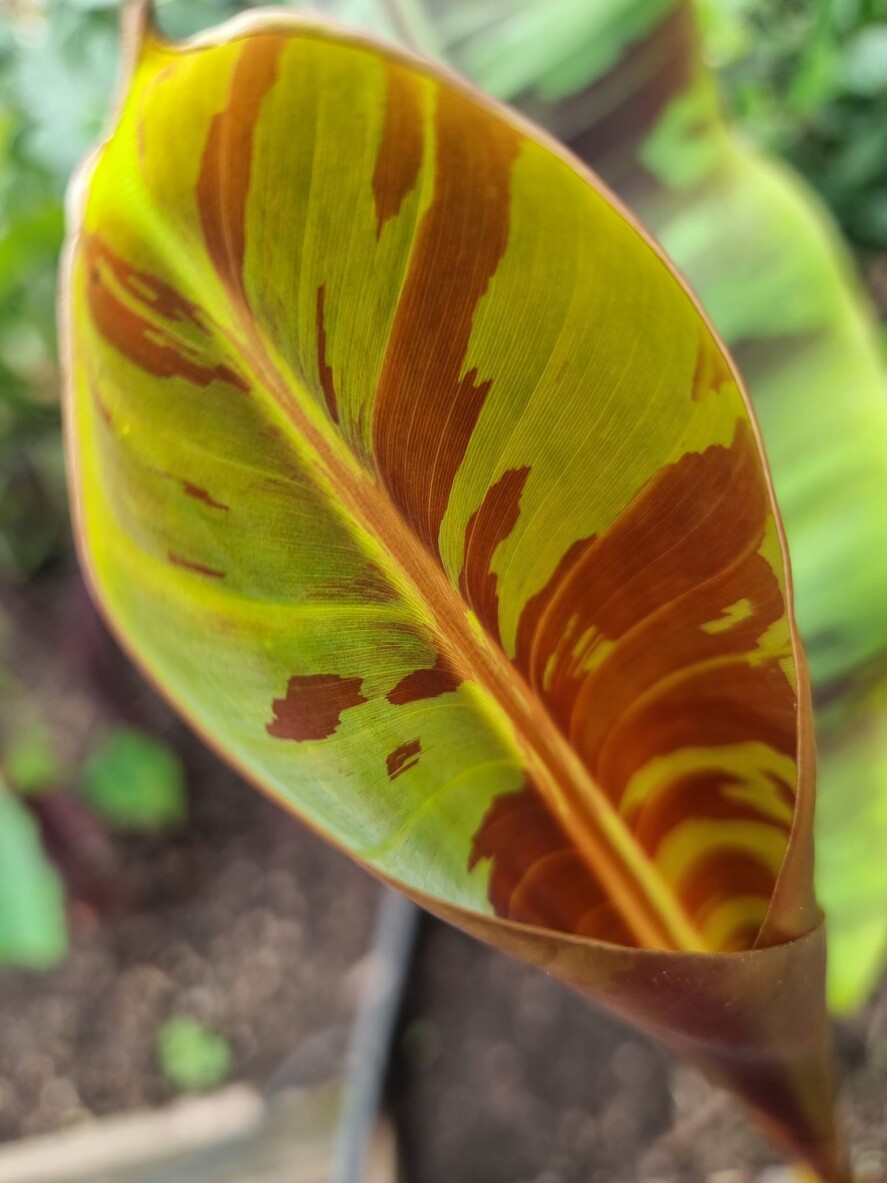
Taxonomic Classification
One important aspect of understanding the Blood Banana is its taxonomic classification; it belongs to the kingdom Plantae, clade Angiosperms, clade Monocots, order Zingiberales, and finally the genus Musa. Within this genus, you will find various species and varieties, each with distinct characteristics. The ‘Musa Acuminata’ designation signifies its edible fruit potential, while ‘var. Zebrina’ highlights the unique variegated pattern that sets it apart, making it a popular choice for collectors.
Geographic Distribution and Natural Habitat
Among the remarkable features of the Blood Banana is its geographic distribution, predominantly found in tropical regions. This banana thrives in humid, warm environments, particularly in Southeast Asia, but it can also adapt to similar climates worldwide. You may find this hardy plant flourishing in gardens or greenhouses, creating an eye-catching focal point wherever it is cultivated.
Due to its preference for tropical climates, the Blood Banana flourishes in rich, well-draining soil with ample moisture. You’ll often see it in areas where temperatures consistently remain above 60°F (15°C). In its natural habitat, you can expect to find it alongside other lush vegetation, basking in filtered sunlight. Its unique adaptation to these environments makes it a favorite not just for aesthetic appeal but also for creating a mini-tropical oasis in your own garden or home.
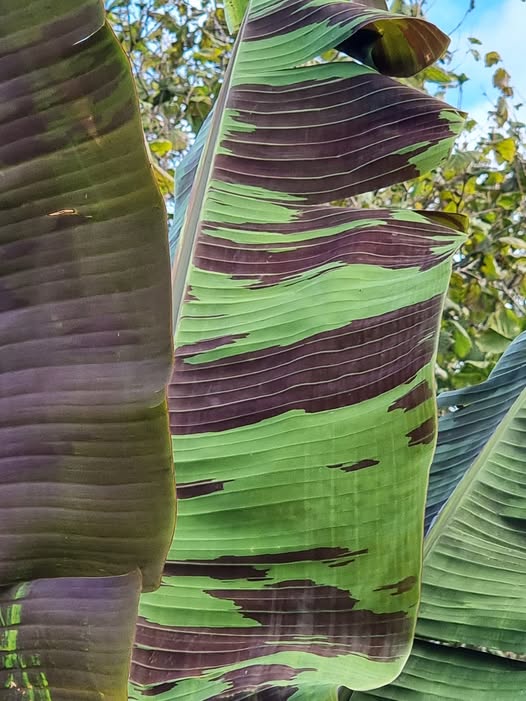 Physical Characteristics
Physical Characteristics
While the ‘Musa Acuminata var. Zebrina’, commonly known as the Blood Banana, captivates you with its unique appearance. This variety is characterized by striking deep red and green variegated leaves, adding vibrant color to your garden. The pseudostems can grow impressively tall, reaching up to 4-6 feet, making it a remarkable focal point in any landscape design.
Foliage and Stem Features
Along with its vibrant leaves, the Blood Banana possesses a sturdy pseudostem that displays bold stripes of red amidst green. This colorful pattern not only enhances its ornamental appeal but also stands out dramatically against more traditional green foliage in your garden.
Growth Pattern and Size
Physical growth habits of the Blood Banana are distinctive, as it develops into an upright, clumping form. This variety typically reaches heights of 4-6 feet within a couple of years, providing a lush, tropical vibe to any space.
Due to its rapid growth rate, the Blood Banana requires ample space to thrive. You can expect it to expand horizontally as well, creating a dense clump over time. Proper care, including adequate water and sunlight, will ensure that your Blood Banana flourishes, allowing you to enjoy its stunning features for years to come.
Cultivation Requirements
One of the key aspects to successfully growing the Banana ‘Musa Acuminata var. Zebrina’ is understanding its cultivation requirements. This striking blood banana thrives under specific conditions that mimic its natural environment, ensuring optimal growth and vibrant foliage.
Light and Temperature Needs
Needs adequate sunlight to flourish, preferably receiving 6 to 8 hours of bright, indirect light each day. The ideal temperature range for this banana variety is between 75°F to 95°F (24°C to 35°C).
Light and Temperature Needs
| Light | 6 – 8 hours of bright, indirect sunlight |
| Temperature | 75°F to 95°F (24°C to 35°C) |
Soil and Water Requirements
One crucial factor for your Banana ‘Musa Acuminata var. Zebrina’ is the soil and water requirements. This plant thrives in rich, well-draining soil that retains moisture without becoming waterlogged.
Requirements include using a balanced potting mix with organic matter to promote fertility. Water your banana plant regularly, ensuring the soil remains consistently moist but not soggy. This helps prevent root rot while providing your plant with the hydration it needs to grow optimally. During the active growing season, consider adding a diluted liquid fertilizer every few weeks to boost growth and enhance its distinctive coloration.
Ornamental Value
Many gardeners find the ‘Musa Acuminata var. Zebrina’, known as the Blood Banana, to be an eye-catching addition to their landscape. Its striking red and green leaves create an instant focal point, providing unique visual interest whether planted as a solitary specimen or in a group. This banana’s exotic appearance adds flair to tropical-themed gardens, while its lush foliage can soften the edges of hardscapes, making it a versatile choice for your outdoor spaces.
Landscape Applications
With its vibrant coloring and bold foliage, the Blood Banana works wonderfully in a variety of landscape applications. You can use it as a specimen plant to draw attention or as part of a colorful border. Additionally, it pairs beautifully with other tropical plants, creating a lush environment that enhances the overall aesthetics of your garden area.
Container Growing Considerations
Among the many options for growing the Blood Banana, container gardening offers you flexibility and mobility. You can place your banana plant anywhere in your yard, allowing for a diverse and dynamic garden design.
Container growing provides an excellent way to maintain control over your Blood Banana’s environment. Make sure to use a large, well-draining pot to accommodate its root system. Choose a soil mix that retains moisture but still allows for good drainage. Regular watering is necessary, as container plants can dry out faster than those planted in the ground. You may also want to consider fertilization, as the nutrients in containers deplete faster. Placing your container in a spot that receives plenty of sunlight will also promote healthy growth and vibrant foliage.
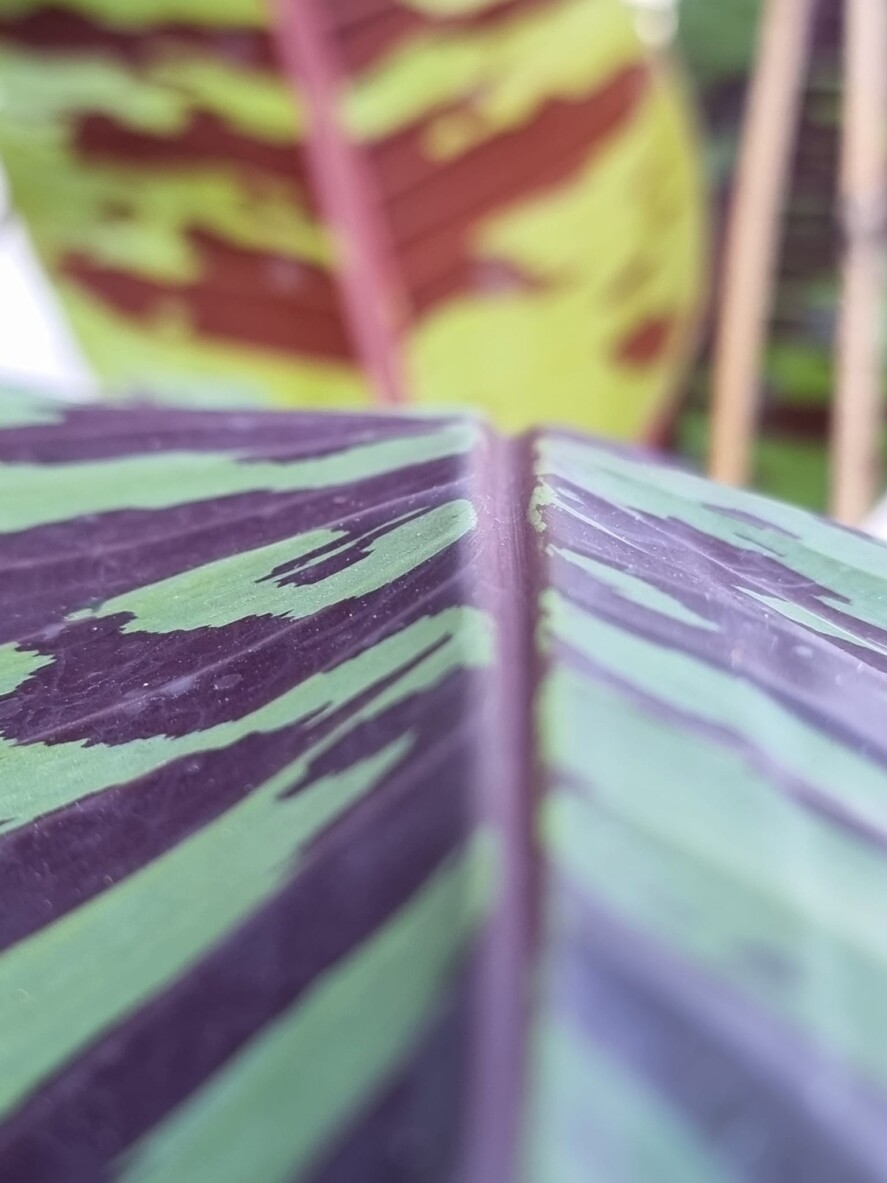
Care and Maintenance
Once again, maintaining the striking Blood Banana ‘Musa Acuminata var. Zebrina’ requires attention to detail. This tropical plant thrives in warm environments with consistent humidity. Ensure that your banana plant is placed in well-draining soil, receiving bright, indirect sunlight. Water regularly, keeping the soil moderately moist but not overly saturated. Regular pruning of dead or damaged leaves will encourage new growth and enhance the plant’s aesthetic appeal. Proper care will allow your banana to flourish and showcase its stunning foliage.
Fertilization and Feeding
Beside regular watering, providing your Blood Banana with the right nutrients is necessary for its vibrant growth. You should use a balanced, water-soluble fertilizer every four to six weeks during the growing season. This will promote lush foliage and overall plant health. Consider using organic fertilizers to nurture your plant more naturally, allowing it to thrive while minimizing chemical exposure.
Pest and Disease Management
Below the surface of your plant’s beauty, pest and disease management is vital for the longevity of your Blood Banana. Regularly inspect your plant for common pests like aphids and spider mites. Maintaining proper air circulation, humidity, and watering practices greatly reduces the risk of diseases. If you notice any issues, treat them promptly with insecticidal soap or neem oil to safeguard your plant’s health.
Understanding the pest and disease management of your Blood Banana is necessary for keeping it healthy. Regularly check for signs of infestation, such as curling leaves or webbing. Early detection allows you to act quickly, minimizing damage. In addition to chemical treatments, consider introducing beneficial insects like ladybugs, which can help control pest populations naturally. Keeping your plant and its environment clean will also reduce the likelihood of fungal diseases. This proactive approach is key to enjoying your beautiful banana plant for years to come.
Propagation Methods
To successfully propagate the striking Blood Banana, you can utilize a few effective methods. These techniques are mainly focused on division and rhizome separation, both of which help you expand your garden with this eye-catching plant. With proper care and attention, you can multiply your Musa Acuminata var. Zebrina easily.
Division Techniques
At the time of planting or repotting, you will find that division techniques are an effective way to propagate your Blood Banana. Carefully separate the offshoots, or pups, from the parent plant, ensuring that each has its root system intact. This will allow you to grow multiple plants from one parent.
Rhizome Separation
Among the popular propagation methods for the Blood Banana, rhizome separation stands out for its simplicity and effectiveness. This method allows you to cultivate new plants directly from the underground structure that supports the banana’s growth.
Methods like rhizome separation involve carefully digging around the base of the plant to access the rhizomes. You want to look for healthy, well-established rhizome sections, each with at least one shoot. Use a clean, sharp knife or spade to make a clean cut, ensuring minimal damage to the parent plant. After separation, you can replant the rhizome sections in suitable soil, where they will develop into new plants with proper watering and sunlight exposure.
Final Words
Summing up, the Banana Musa Acuminata var. Zebrina, or the striking Blood Banana, is an extraordinary addition to your plant collection. Grown in Te Puke, Bay of Plenty, NZ, we love this plant being a part of the Troppo Food Forest, where its vibrant red and green leaves bring a bold tropical touch to the landscape. Its easy-care nature makes it suitable for both novice and experienced gardeners. By understanding its specific light and water needs, you can enhance your outdoor or indoor space with this tropical beauty. Embracing the characteristics of this captivating banana plant will not only enrich your gardening experience but also provide you with a touch of exotic elegance.

